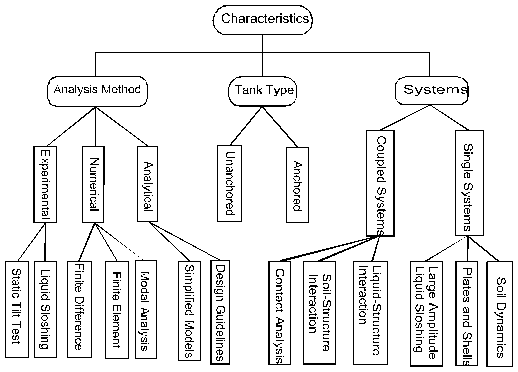 |
Problems associated with the seismic behavior of liquid storage tanks involve the analysis of three systems: the tank, the soil and the liquid, as well as the interaction between them along their boundaries. The up-to-date technology in the nonlinear finite element analysis of plates and shells is utilized to model the tank wall and base plate. The Eulerian finite element method is used to model the liquid inside the liquid domain while the Lagrangian-Eulerian finite element method is used to model the liquid boundaries. Interaction between the tank and the liquid is due to the liquid hydrodynamic pressure that transfers a significant amount of energy to the tank. In addition, the motion of the tank shell is the main source of the liquid energy. Since this energy transfer occurs simultaneously throughout the liquid boundary, it becomes essential in the analysis of such systems to consider the liquid-structure interaction effect.
Analysis of the seismic behavior of unanchored tanks also includes the effect of large amplitude base uplifting. It has been observed in past earthquakes that the bottom plate can be lifted by as much as one foot or more, and therefore, its behavior affects the response of the overall system in a dominant way. The uplifting problem is a special type of the nonlinear contact problem between two bodies. Thus, the evolution of contact analysis as well as Large deflection and rotation analysis of plates and shells are strongly related to the area of the seismic behavior of unanchored tanks. It also involves the seismic behavior of the soil and the dynamic soil-structure interaction.
In summary, the previous work related to the seismic analysis of on ground liquid storage tanks may be characterized mainly by the method of the analysis and the investigated problem, as shown in Figure (1.2). The method of investigation of such problems is either experimental, analytical or numerical. As computers have evolved, numerical methods became the most effective method to analyze complex problems. Many researchers have been employing the finite element method to investigate contact problems, soil plasticity and large amplitude liquid sloshing as well as both fluid-structure and soil-structure interactions.